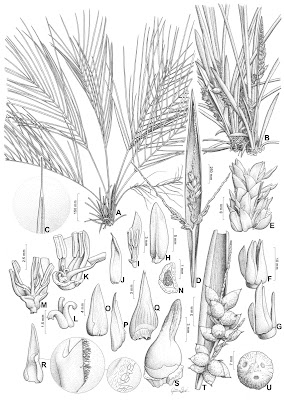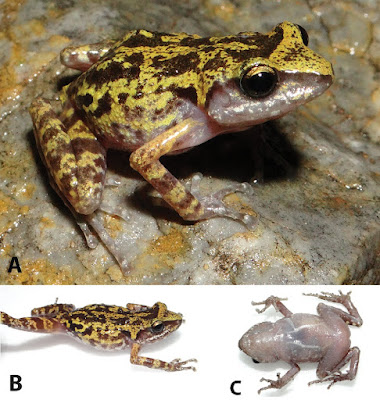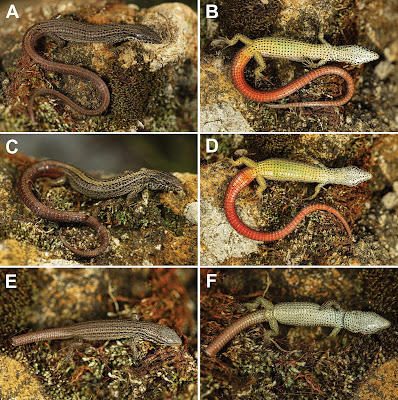 |
| Entoloma lushanense J. Wang, J.Q. Yan & G.H. Huo, in Wang, Yan, Huo, Cui et Zhang, 2020. |
Abstract
A new species, Entoloma lushanense, is described and illustrated from the Jiangxi Province of China. It is characterized by a small brownish grey pileus with obtuse umbo, heterodiametric spores, a pileipellis as a cutis with a subpellis, and the absence of cystidia and clamp-connections. These morphological characteristics and the phylogenetic analyses (Bayesian Inference and Maximum Likelihood) supported the uniqueness of the species and its taxonomic status within the subgenus Nolanea.
Keywords: Agaricales, phylogenetic analysis, taxonomy, Fungi
 |
| Entoloma lushanense (holotype, HFJAU0737) in the field. Bars: 10 mm. Photo by Jun-Qing Yan. |
Entoloma lushanense J. Wang, J.Q. Yan & G.H. Huo, sp. nov.
Jun Wang, Jun-Qing Yan, Guang-Hua Huo, Chao-Yu Cui and Lin-Ping Zhang. 2020. Entoloma lushanense (Entolomataceae, Basidiomycota), A New Species of Entoloma subgenus Nolanea from Jiangxi Province, China. Phytotaxa. 464(1); 93-101. DOI: 10.11646/phytotaxa.464.1.8
Researchgate.net/publication/346215811_Entoloma_lushanense_a_new_species_from_Jiangxi_Province_China






























_2023--Kohler_Thammachoti_Mogk__.jpg)
_2023--Kohler_Thammachoti_Mogk__.jpg)










